 |
 |
 |
| |
High CAB-LA PrEP On-Time and Retention Rates in US
Urban Safety-Net Clinic Population. SF, Ward-86
|
| |
| |
HIVR4P 2024, Fifth HIV Research and Prevention Conference, October 6-10, 2024, Lima
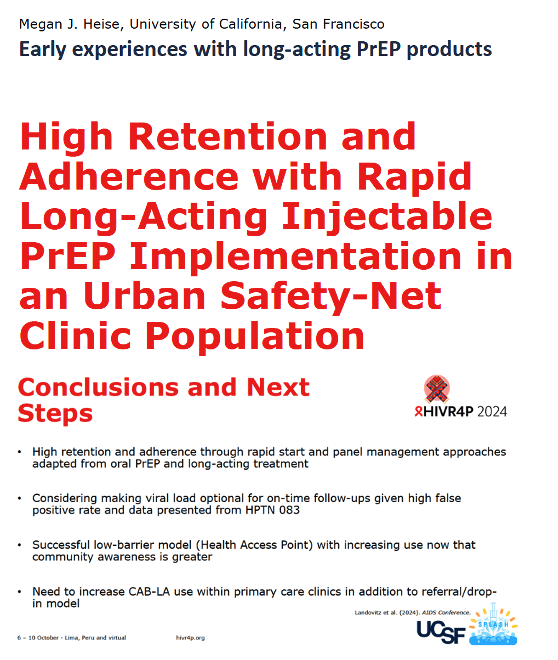
Mark Mascolini
More than 80% of people in an urban safety-net clinic network remained in a program using long-acting injectable cabotegravir (CAB-LA) for preexposure prophylaxis (PrEP) of HIV infection [1]. That retention rate exceeded retention to oral PrEP in the same population when studied earlier. Program participants in the new study received most injections (85%) on time.
CAB-LA proved superior to daily oral tenofovir/emtricitabine as PrEP in cisgender men and women in two large randomized trials, HPTN 083 [2] and HPTN 084 [3]. Research shows that 37% to 52% of people stop pill-based PrEP within 6 months of starting, according to Megan Heise (University of California, San Franciso) and colleagues from other centers, who conducted the CAB-LA study [1]. PrEP that can be injected every 1 or 2 months could improve adherence to this medication-based prevention strategy. But in the United States CAB-LA has accounted for fewer than 2% of PrEP prescriptions in 2024, Heise and coworkers said. And data on implementation and adherence-especially in marginalized groups-remain scanty.
To learn more about CAB-LA adherence and retention, the researchers studied people in 8 of 14 San Francisco Department of Public Health primary care clinics, a network that serves only people using public insurance. The 111 participants started CAB-LA PrEP between March 2022 and May 2024. The investigators considered a dose late if given more than 7 days after the target date.
These 111 people averaged 36.9 years in age, 65% were cisgender men, 19% cisgender women, 10% nonbinary, and 5% transgender women. The socioeconomic challenges facing this study group are reflected in the high proportion with a mental health diagnosis (56.8%), any substance use (50.5%), and unstable housing (36%). While about one quarter of the group (27.9%) had never tried PrEP, 38.7% were switching from oral PrEP, and 33.3% had used PrEP but were not when this study began.
Consenting people with a negative HIV antigen-antibody rapid test and no signs of acute HIV infection got their initial CAB-LA shot immediately, while lab-based testing to confirm the rapid result began. In the largest clinic in the system, 20 of 63 people (32%) started CAB-LA within 24 hours of their first appointment. Of the 597 injections given, 507 (85%) were on time.
A mental health diagnosis nearly doubled chances of late CAB-LA injection (odds ratio adjusted for age, race, gender [aOR] 1.93, P = 0.040). Every 10 years of age tended to boost odds of late injections. But housing instability, substance use, and switching from oral PrEP or using prior but not current PrEP did not affect chances of late injections in this analysis.
After 6 months of follow-up, retention in this CAB-LA PrEP program stood at 83% (95% confidence interval [CI] 75% to 91%). Time using the injected antiretroviral averaged 220.58 days (95% CI 181.32 to 259.83). Among 19 people who stopped CAB-LA during the study period, 4 switched to oral PrEP and 15 stopped PrEP entirely.
Statistical analysis adjusted for age, race, and gender determined that substance use more than doubled chances of stopping CAB-LA (aOR 2.23, P = 0.017), prior PrEP versus no PrEP boosted quitting odds 4.6-fold (aOR 4.66, P = 0.036), and a mental health diagnosis inflated odds of stopping CAB-LA PrEP more than 5-fold (aOR 5.36, P = 0.019). Insecure housing did not sway chances of quitting CAB-LA in this analysis. Reasons for stopping CAB-LA PrEP included low self-perceived HIV risk in 6 people and PrEP side effects in 4.
No one became infected with HIV during the study period, but researchers did record 3 false-positive HIV viral loads (below 30 copies).
Earlier studies of oral PrEP in the same clinic network saw about 60% retention at 6 months, a result in line with other sites using oral PrEP but more than 20% lower than with CAB-LA in this San Francisco public health study group.
The investigators believe their good 6-month retention results mean injected CAB-LA could be a PrEP option for people averse to using oral PrEP. They proposed than an "integrated wraparound mental health and substance use treatment model" is the key to success with programs like theirs.
References
1. Heise MJ, Camp C. Oskarsson J, et al. Low-barrier, rapid cabotegravir PrEP initiation and retention within a U.S. municipal health system. HIVR4P 2024, Fifth HIV Research and Prevention Conference, October 6-10, 2024. Lima. Abstract PRC167.
2. Landovitz RJ, Donnell D, Clement ME, et al. Cabotegravir for HIV prevention in cisgender men and transgender women. N Engl J Med. 2021;385:595-608. DOI: 10.1056/NEJMoa21010. https://www.nejm.org/doi/full/10.1056/NEJMoa2101016
3. Delaney-Moretlwe S, Hughes JP, Bock P, et al. Cabotegravir for the prevention of HIV-1 in women: results from HPTN 084, a phase 3, randomised clinical trial. Lancet. 2022;399:1779-1789. https://www.thelancet.com/journals/lancet/article/PIIS0140-6736(22)00538-4/fulltext
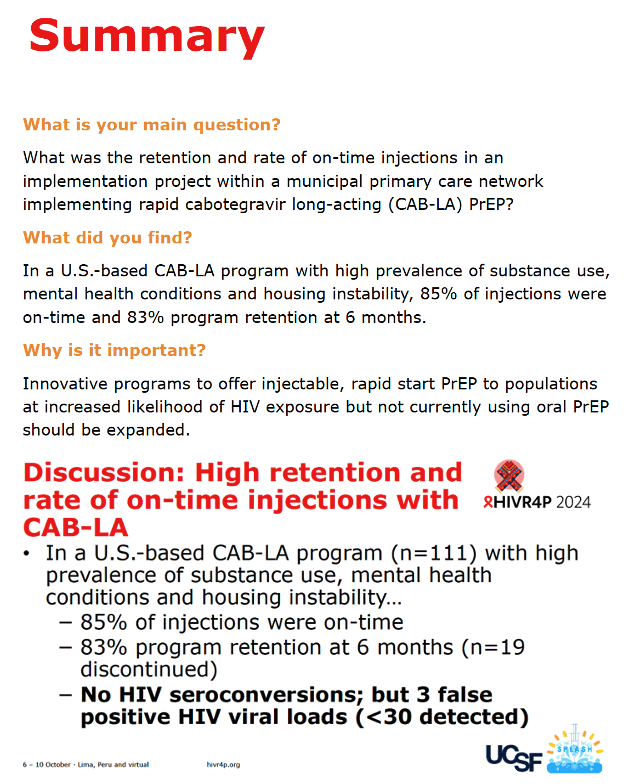
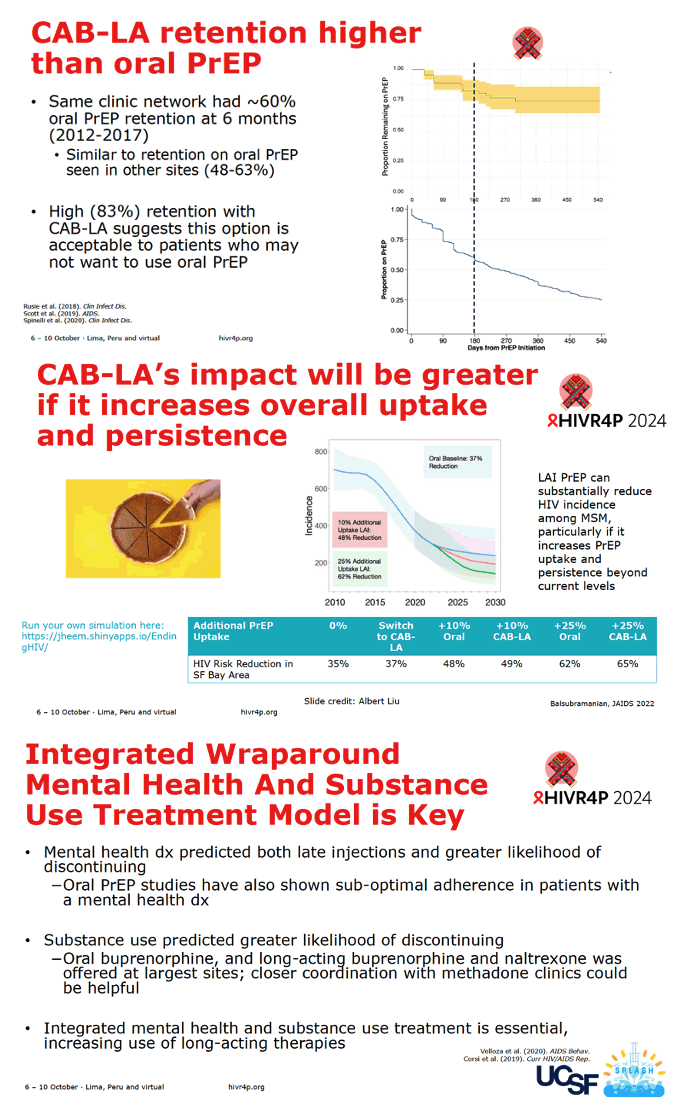
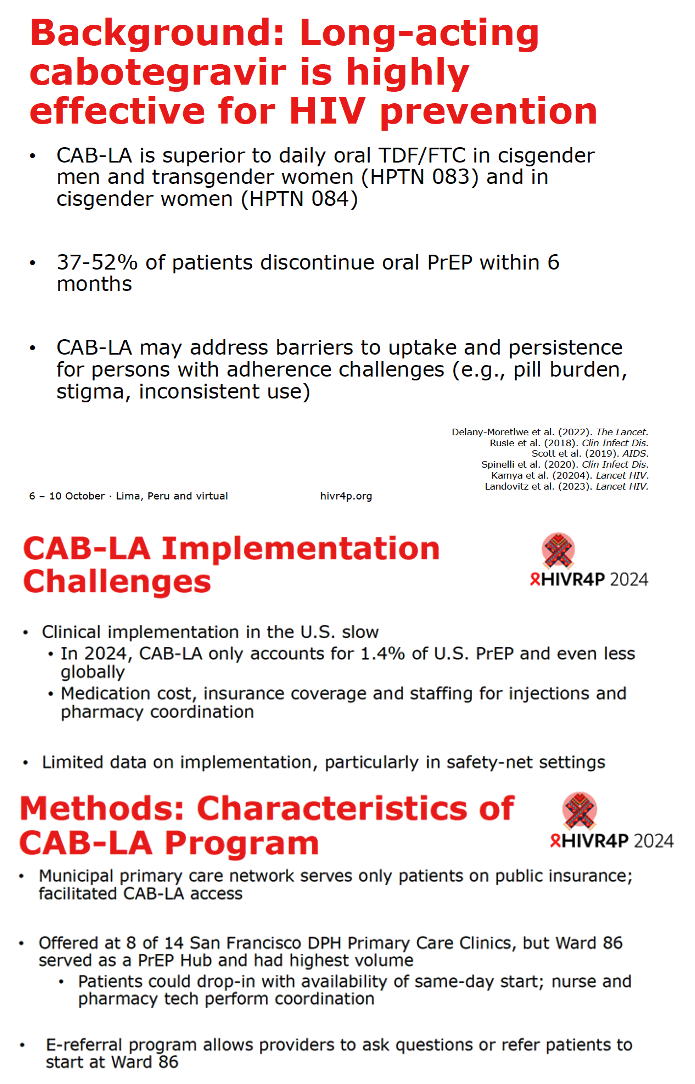
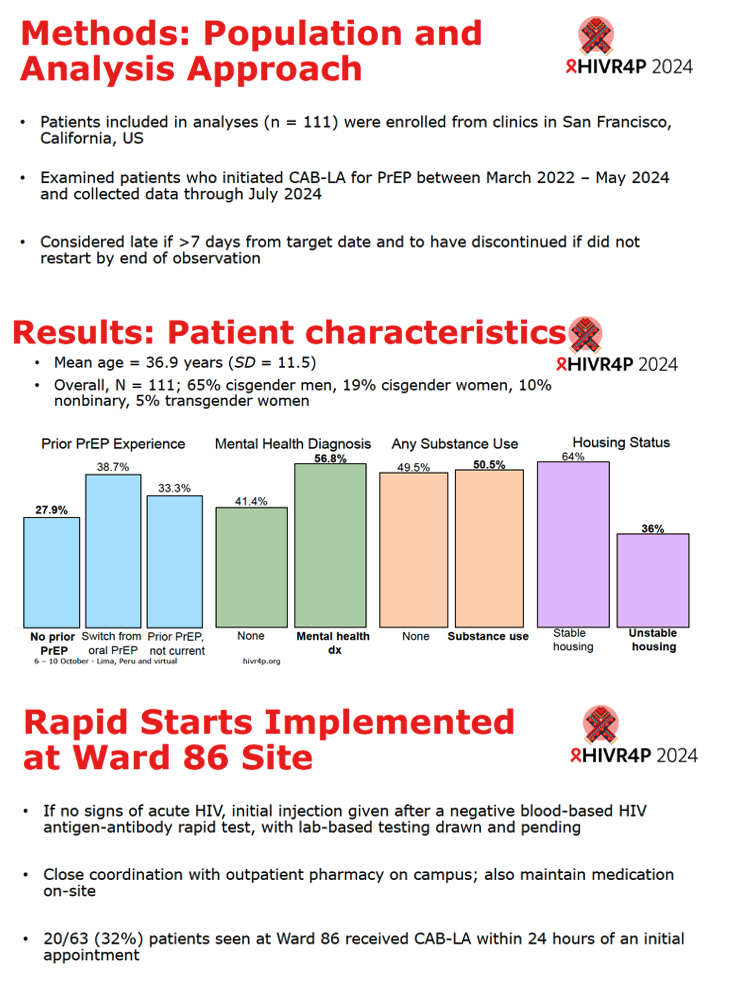
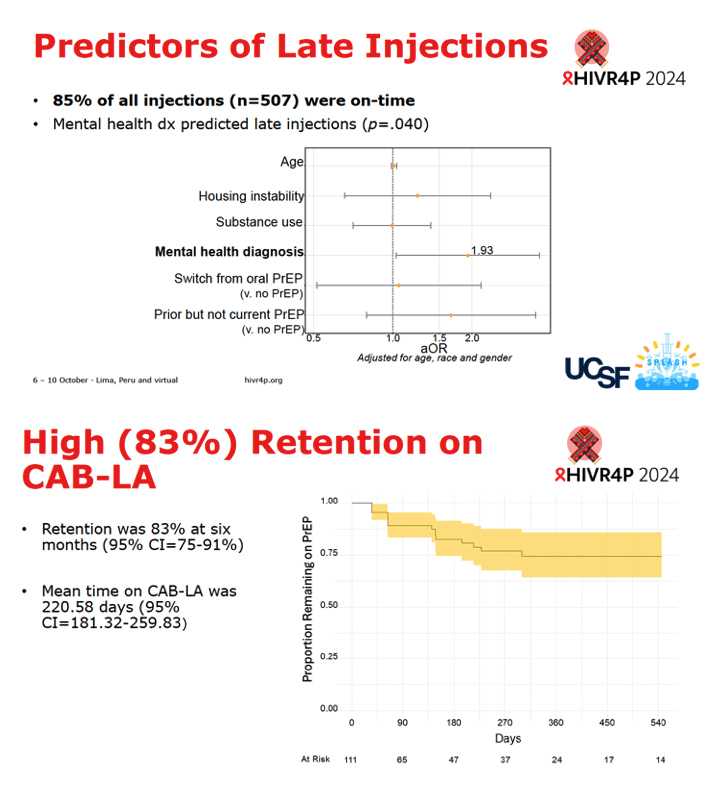
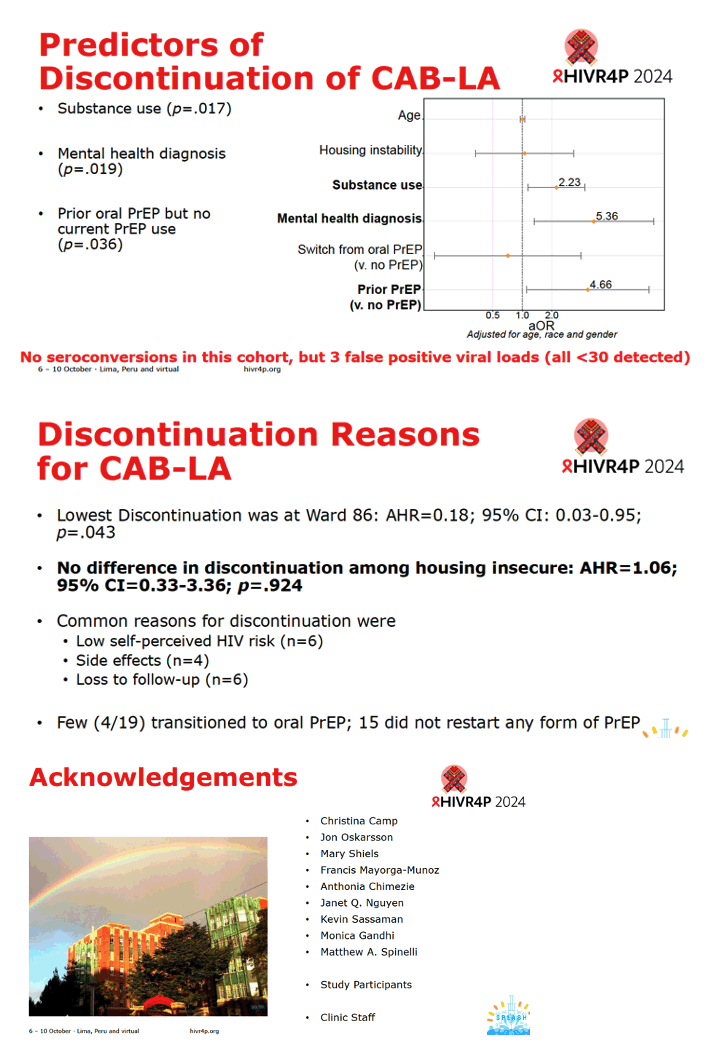
|
| |
|
 |
 |
|
|